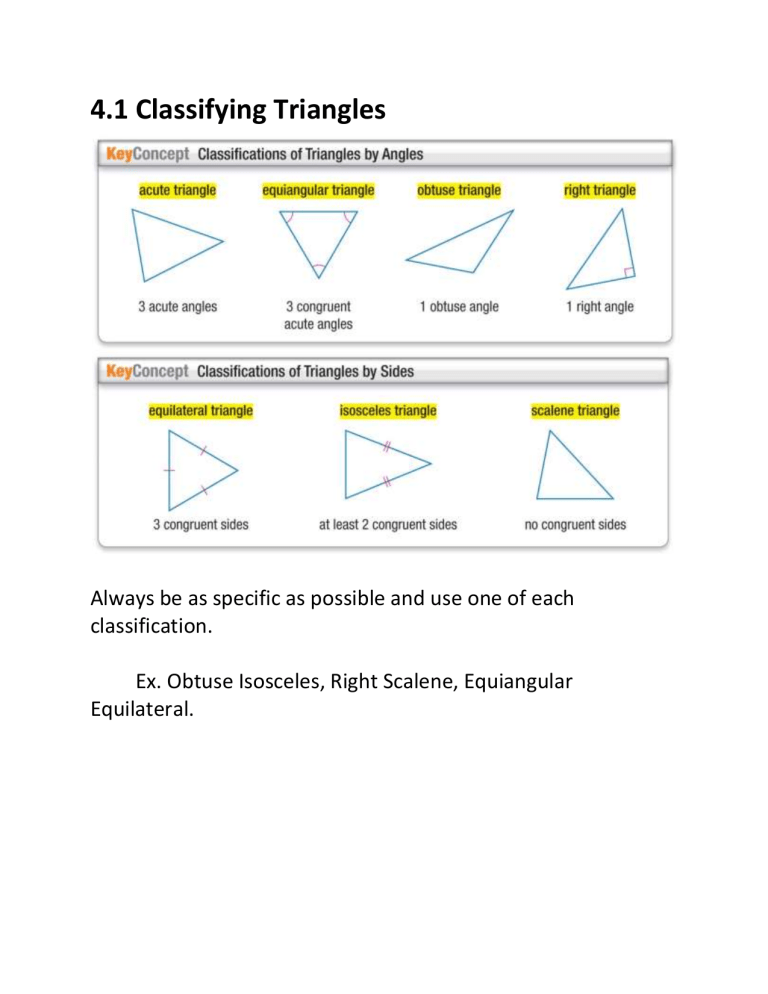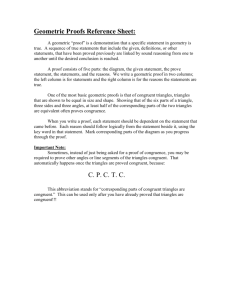Chapter 4 Notes

4.1 Classifying Triangles
Always be as specific as possible and use one of each classification.
Ex. Obtuse Isosceles, Right Scalene, Equiangular
Equilateral.
4.2 Angles of Triangles
Auxiliary Line – An extra line or segment drawn in a figure to help analyze geometric relationships.
Exterior Angle – Formed by one side of the triangle and the extension of an adjacent side.
Remote Interior Angles – The two angles not adjacent to the exterior angle.
Flow Proof – An argument that uses statements written in boxes and arrows to show the logical progression of an idea.
Corollary – A Theorem with a proof that follows as a direct result of another theorem.
4.3 Congruent Triangles
Congruent – Two Geometric figures that have exactly the same shape and size.
If two triangles are congruent, then their corresponding parts are congruent. For triangles, we say Corresponding Parts of
Congruent Triangles are Congruent, or CPCTC for short.
4.4 Proving Triangles are Congruent—SSS, SAS
Included Angle – The angle formed by two adjacent sides of a polygon
4.5 Proving Triangles Congruent – ASA, AAS
Included Side – The side located between two consecutive angles of a polygon.
4.6 Isosceles and Equilateral Triangles
Legs of an Isosceles Triangle – The two congruent sides.
Vertex – The angle with sides that are the legs.
Base Angles – The two angles formed by the base and the congruent sides.
4.7 Congruence Transformations
Transformation – An operation that maps an original geometric figures onto a new figure.
Preimage – The original geometric figure before a transformation.
Image – The new geometric figure after a transformation.
Congruence Transformation – A mapping for which a geometric figure and its image are congruent. Also called a rigid transformation or Isometry.





